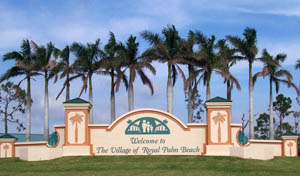Hurricane season begins Monday, June 1, and Royal Palm Beach officials have been brushing up on emergency plans to make sure that the village is ready for a storm emergency.
The National Oceanic & Atmospheric Administration, or NOAA, released a statement May 26 predicting a below-normal Atlantic hurricane season, with a 70 percent likelihood of six to 11 storms, where three to six might become hurricanes, with possibly two major hurricanes.
But that optimistic forecast doesn’t change village plans for a robust emergency response.
“In June, we do a full review and update of the storm emergency response plan, including associated sub-plans such as emergency evacuations, emergency road plans, etc.,” Village Engineer Chris Marsh told the Town-Crier on Wednesday. “We go through the plan and refresh the data that changes from year to year.”
The village is updating its mobile geographic information system to perform live mobile updates while in the field surveying storm damage.
“We’ll be utilizing iPads in lieu of pencil and paper,” Marsh said. “What that will allow us to do is to utilize GPS technology to take pictures based on location, automatically impart parcel attributes… and do a whole lot more work back in the office. As they’re collecting this information — provided the cellular networks are up — we’ll be getting that data live back to our [Emergency Operations Center], which we’ll be able to process and get to the Palm Beach County EOC quicker.”
The goal for the county EOC, he said, is to tabulate the damage as fast as possible, determining whether the situation can be declared a state of emergency, which allows the Federal Emergency Management Agency (FEMA) funding to kick in.
A new EOC, which can withstand 150-mph winds, has been built as a place for key village personnel to ride out the storm. The center will be the primary EOC, which is connected to the secondary EOC field operations center. The two centers are linked by fiber optics.
“It’s an ongoing effort,” Marsh said, explaining that hurricanes are a big thing, but the village has created a manual for operations, before, during and after all sorts of different disasters.
Each department has a certain set of procedures to follow before a storm, and then after recovery, it becomes department-based.
The Palm Beach County web site is a great resource for information before and after a storm, Marsh said. A great deal of information can be found at www.pbcgov.com/publicsafety/emergencymanagement.
For example, a free app called the PBC Disaster Awareness & Recovery Tool (DART) is available for smartphone and tablet use. There is also something called “Know Your Zone,” which provides guidance for residents in making a storm plan, building a storm kit, getting involved and staying informed.
Minimizing the impact of a storm is important, and that includes making sure structures are ready to withstand a storm. As buildings have been built, building codes have changed. Older buildings may be more susceptible to damage, but taking precautions can make a big difference.
“Damage assessment is a big part of it,” Marsh said. “The sooner we’re able to figure out what’s damaged, and the value of that damage, and take that documentation and submit it to FEMA or insurance companies for reimbursement, the sooner that we are able to get that funding in place and start getting things rebuilt after the storm.”
Once the village is up and running again, it becomes a stronger resource for residents who have been affected by the disaster.
“Whether you have flooding or not can greatly impact how you respond to a storm,” he said. “Once we’re in that storm window, and as long as we stay in that window, every 12 hours, different operations take place up until that storm. Then, after the event passes, we assess what’s happened and we react to it in an organized manner.”
Hospitals and emergency response corridors are the top priority for returning to normalcy.
Flooding, wind, electricity and building structure are all variables that influence which plan the village uses to prepare and react to a storm.
“You prepare as much as you can, and then you deal with the event afterward,” Marsh said.
The village has adopted the system of incident management as suggested by FEMA, which helps in its efficiency.
The EOC chain of command for recovery after a storm event starts with the local government, then county, state and federal, as resources are overwhelmed. Resources are then allocated, based on where they can have the largest impact.
Royal Palm Beach also has message boards that will be utilized before and after a storm, as well as its television station and web site to convey pertinent information to village residents. If needed, residents can also be contacted through the reverse 911 system.








